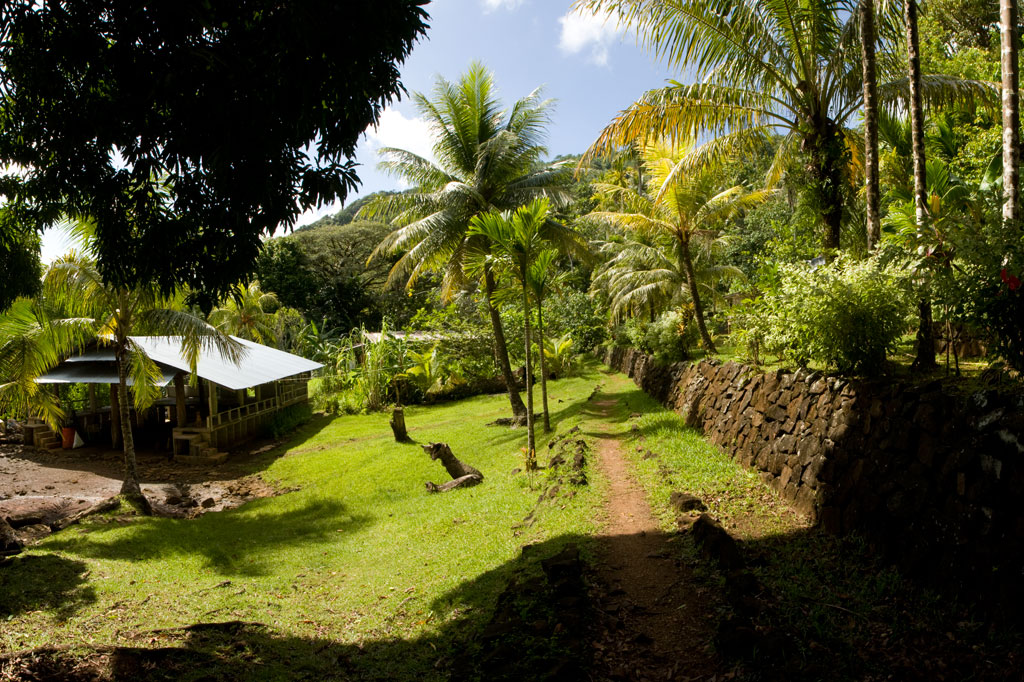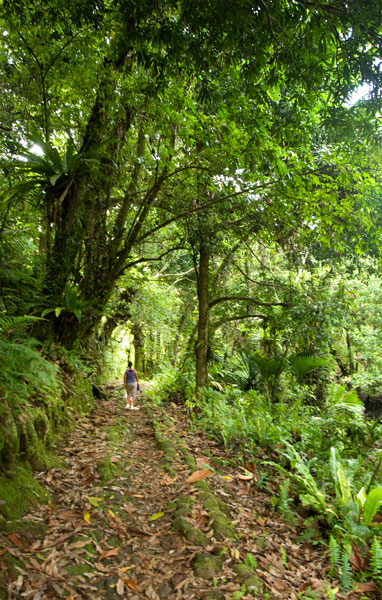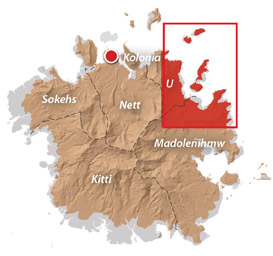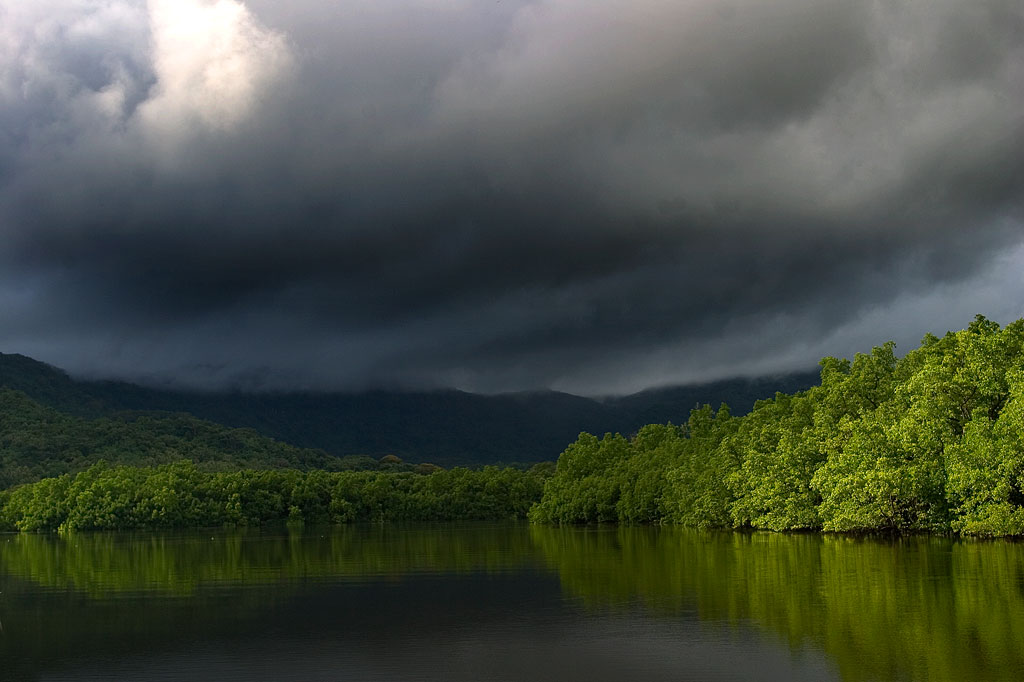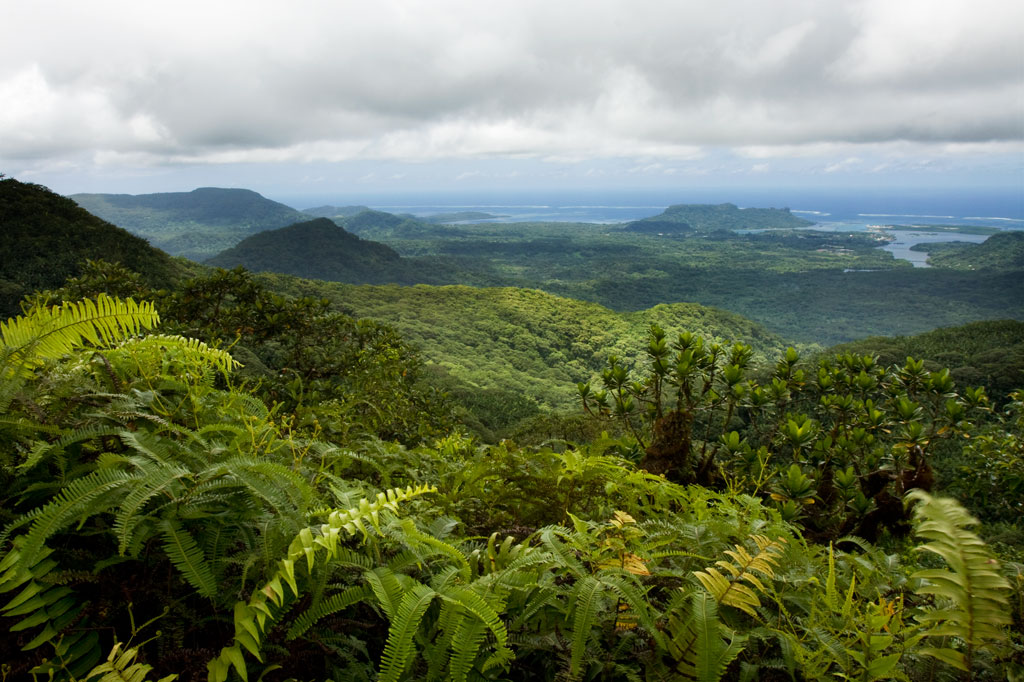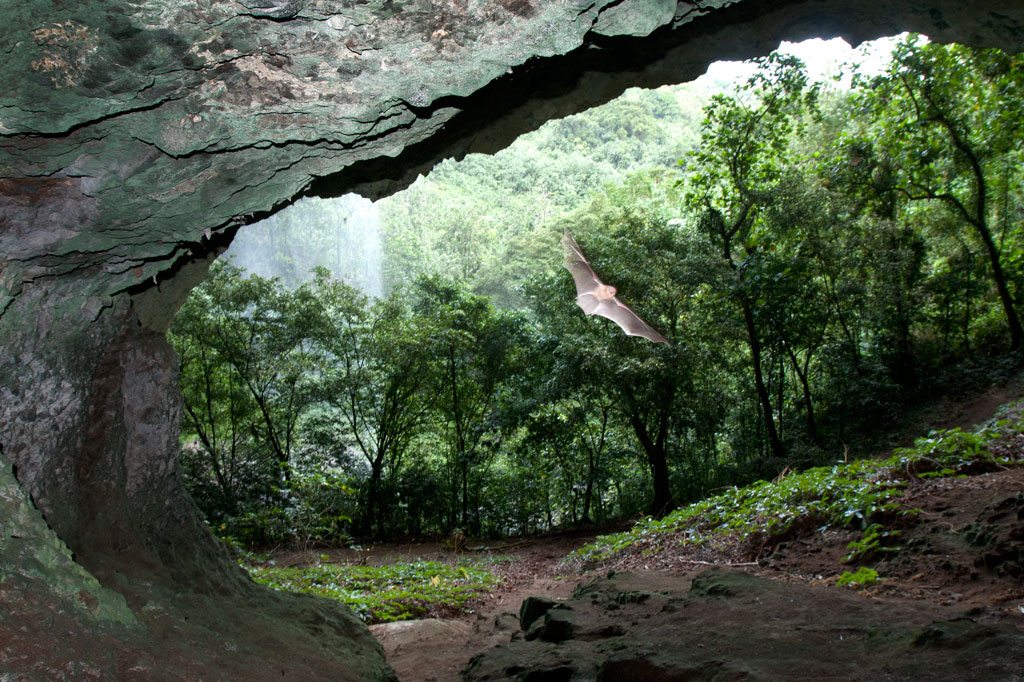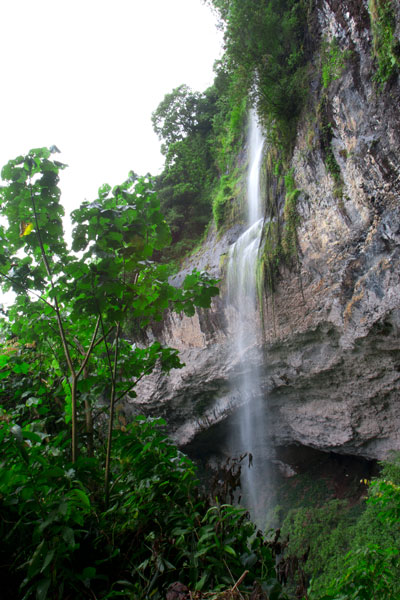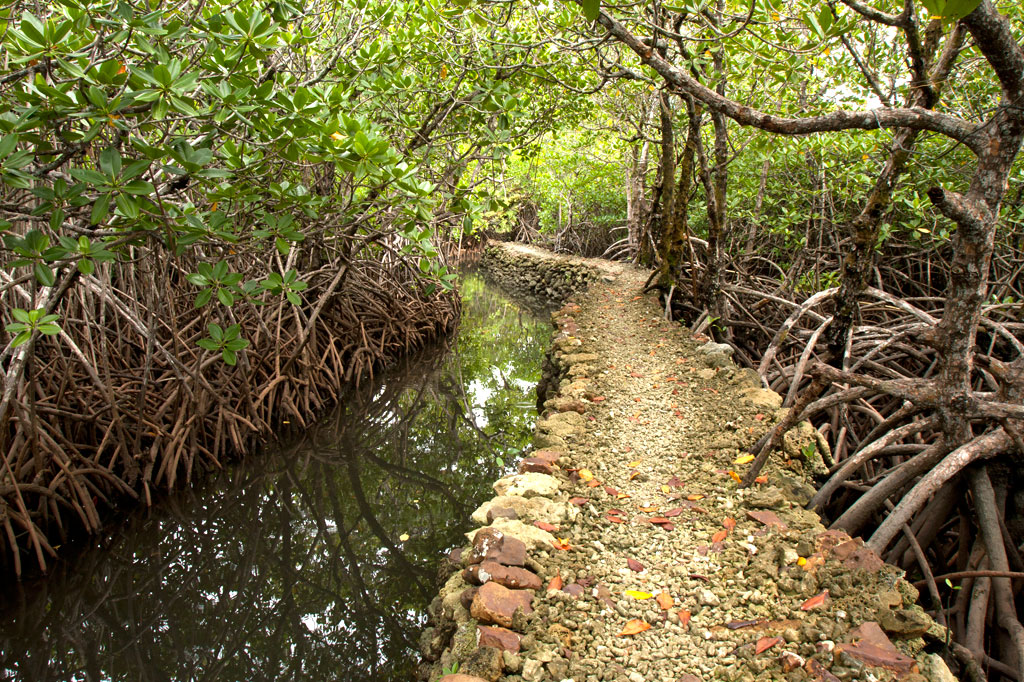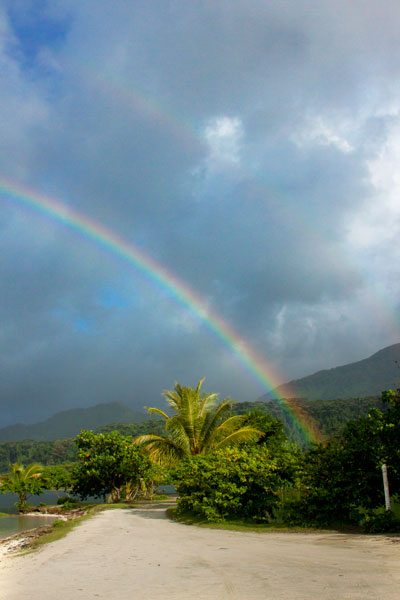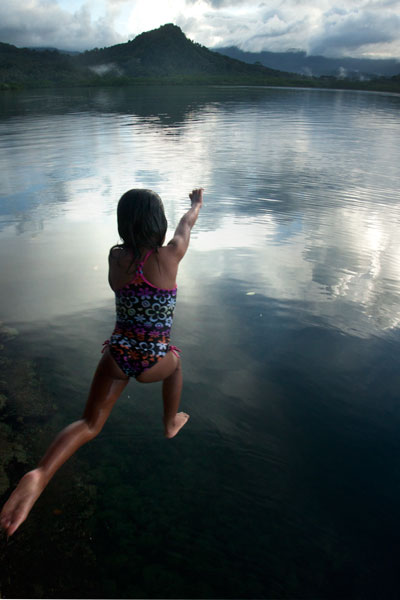Takaieu and Dehpehk are two large volcanic islands connected by a bridge and linked to the coast of U by a causeway. Most of the local residents live around the eastern and northern coasts of Takaieu and the western coast of Dehpehk and commute to and from Pohnpei by boat. The islands are fun to explore if you want to get a glimpse of old-style Pohnpeian life sans roads and electricity. A seaward turn just before the Madolenihmw border brings one to the unpaved causeway. A well-maintained footpath runs east around Takaieu, crosses the Dehpehk-Takaieu Bridge, continues on the west coast of Dehpehk, and then wraps around the eastern coast, where it connects with another trail going over the interior hill. The marine areas along the eastern coast belong to the Dehpehk Marine Protected Area (MPA). No permission is needed to visit either island, but do be respectful and stay on the main paths around the inhabited areas.
Takaieu Island
Takaieu figures into a well-known local myth about two magical brothers. The island is said to have been created when these brothers dragged a large rock all the way from Yap — hence the name, which means “one rock.” The causeway road ends not far along the south coast and is replaced by a tidy rock footpath (vehicles can be parked on the side of the road near the trailhead). From there, the path bends around the mangrove-fringed eastern coastline, passing neatly maintained farmsteads here and there. Mwelling marks the spot of one of the megalithic structures built by Olsihpa and Olsohpa before they founded Nan Madol. The site is impressive, but is easier to reach by boat than from land. About halfway across the north side of the island, the path turns and connects with Dehpehk via a small concrete footbridge.
The Origin of Takaieu Island
There was once a woman in Salapwuk named Lienlama who had two sons named Mwohnmur and Sarapwau. The boys were quite mischievous and had many adventures that figure into Pohnpeian myth. In one story, the brothers went to the islands of Yap and used a magic spell to make a stone fly from that place to Pohnpei. They flew the stone to Wenik (modern-day U) and set it down in the lagoon, naming it Takaieu (“one stone”). They had brought some southern yams with them and they cooked these up, but threw the parts that were underdone into the forests of Alohkapw and Edienleng. And so they southern yam was first propagated in those places.
Dehpehk Island
Dehpehk is long and skinny with a low ridge running along its length. Like Takaieu, it forms its own sub-division, or kousapw, The trail on the west coast is narrow, but heavily used as there are many residences on this side. Once you’ve reached the northern extreme of Dehpehk, however, there’s little reason to go further as the trail gets steadily harder to follow where many of the houses have been abandoned. If you do want to continue, you’ll end up at a homestead with a large piggery. Here the path turns west and climbs over the central hill, reconnecting with the western coastal trail. There’s a nice elevated view from a point just below Dolen Dehpehk (100 m).
- Plan for 7-8 hours for this hike.
- To obtain a guide who can show you around both islands contact Pohnpei Surf Club as one of their boat drivers / dive masters is from the area and can provide assistance with exploring the islands.


